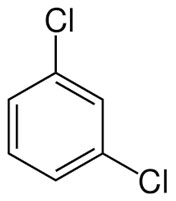 What is Dichlorobenzene?
What is Dichlorobenzene?
Dichlorobenzene is a synthetic, white crystalline solid that is practically insoluble in water and soluble in ether, chloroform, carbon disulfide, benzene, alcohol and acetone.
Uses
Dichlorobenzene is used mainly as a fumigant for the control of moths, molds, and mildews, and as a space deodorant for toilets and refuse containers. Dichlorobenzene is also used as an intermediate in the production of other chemicals, in the control of tree-boring insects, and in the control of mold in tobacco seeds.
Sources & Potential Exposure
The primary exposure to Dichlorobenzene is from breathing contaminated indoor air. Acute (short-term) exposure to Dichlorobenzene, via inhalation in humans, results in irritation of the skin, throat, and eyes. Chronic (long-term) dichlorobenzene inhalation exposure in humans results in effects on the liver, skin, and central nervous system (CNS). No information is available on the reproductive, developmental, or carcinogenic effects of Dichlorobenzene in humans. A National Toxicology Program (NTP) study reported that dichlorobenzene caused kidney tumors in male rats and liver tumors in both sexes of mice by gavage (experimentally placing the chemical in their stomachs).The general population is mainly exposed to Dichlorobenzene through breathing vapors from Dichlorobenzene products used in the home, such as mothballs and toilet deodorizer blocks. The median indoor air concentration of dichlorobenzene detected at 2,121 sites was 0.283 parts per billion (ppb). Ambient air levels of Dichlorobenzene are very low; a study with 1,447 samples reported the majority of levels below the detection limit. Dichlorobenzene has been detected in drinking water at levels ranging from 0.01 to 1.54 ppb. Occupational exposure to Dichlorobenzene may occur in factories that produce or process Dichlorobenzene products.
Federal Regulations
EPA has classified Dichlorobenzene as a Group C, possible human carcinogen.


 Americas
Americas Europe
Europe Français
Français Deutsch
Deutsch Italiano
Italiano Español
Español


